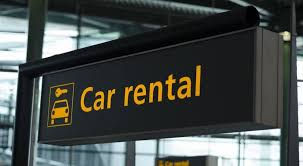Driving abroad: do not get caught looking crazy at the counter.
- Bree Leaves
- Sep 15, 2023
- 3 min read
Sometimes, Uber just doesn't suffice. There might be times when you want the freedom to drive to another part of the country. Opting for a rental car grants you control over your schedule. No longer do you have to adhere to bus or train timetables, allowing you to come and go as you please. You can tweak your trip on the fly, making impromptu stops at intriguing spots or departing from overcrowded, overrated locations.
Before securing a rental car abroad, there are several key factors to keep in mind:
1. **International Driving Permit (IDP):** In certain cases, you may need an International Driving Permit (IDP), which is essentially a multi-page booklet translating your driver's license into various languages. The IDP proves invaluable if you get pulled over by non-English-speaking authorities. These permits are obtainable at AAA branches and necessitate a passport-type photo. It's important to note that the IDP is often mistakenly referred to as an "International Driver's License." However, it isn't a driving document per se; rather, it serves as an official translation of your U.S. license data into ten other languages. When required, you must carry both your U.S. license and the IDP.
**How to Apply for an IDP:**
To request an IDP, you must be at least 18 years old and provide the following:
- A completed IDP application.
- A valid driver's license issued by your state's DMV.
- Two passport-sized photos of yourself.
- A $20 payment for the IDP.
Remember, you can only obtain an IDP in your home country, so be sure to secure one if you plan on driving abroad.
2. **Local Rental Laws:** Prior to renting a car abroad, research the local rental laws. Many countries permit you to rent a car and legally drive with your U.S. driver's license, but there may be additional stipulations regarding eligibility.
3. **Cross-Border Travel:** If you intend to tour multiple countries by car, consult with the rental car company. Renting a car in one country doesn't automatically grant you the ability to drive it across borders. Always inquire about any restrictions or conditions imposed by the rental car provider.
4. **Transmission Type:** Consider the type of transmission you're comfortable with. Automatic transmissions may come at a higher rental cost, if they are available at all. If you're not experienced with manual (stick shift) driving, factor in the cost of an automatic rental, as renting a car in a foreign country isn't the ideal time to learn.
5. **Driving Conditions:** Take into account the driving conditions of your destination. Some places boast smaller, winding roads that appeal to driving enthusiasts and may even warrant renting exotic cars. In contrast, smaller towns may feature poorly maintained roads, dirt tracks, or stone-paved roads. Moreover, be aware that several countries, including England, drive on the left side of the road. Assess your comfort level with different driving conditions before making your rental choice.
6. **Border Crossing Rules:** If your journey involves crossing international borders, research each destination's requirements, including the need for an IDP and other legal prerequisites, which may differ from one country to another. Additionally, check if your rental provider allows you to take the car to another country. In some cases, it might be more practical to rent two cars, such as a left-hand drive car in England and a right-hand drive car in France, to navigate different road systems.
7. **Insurance Coverage:** Most U.S. auto insurers do not extend coverage for international driving, except for Canada and Mexico. Unless you possess a credit card offering rental car insurance, you will likely need to purchase insurance directly from the rental company. It's advisable to obtain a level of international insurance coverage similar to what you have domestically. Keep in mind that certain countries may mandate additional coverage, such as theft insurance (e.g., Italy). Laws and coverage requirements can vary widely between countries, so communicate clearly with your insurer or rental company about your intended travel destinations.
8. **Local Rules and Signs:** Familiarize yourself with the rules of the road and local signage in your destination country. While some road signs, like the stop sign, are universal, others may differ significantly from place to place. Understanding local driving customs and road etiquette is essential for a safe and pleasant driving experience. For example, in some regions, flashing your headlights indicates that you're allowing someone to merge, while in others, it signals a more aggressive driving intent.
Incorporating these considerations into your plans will help ensure a smooth and enjoyable rental car experience while traveling abroad.
For More Information please visit- https://www.usa.gov/international-drivers-license







Comments